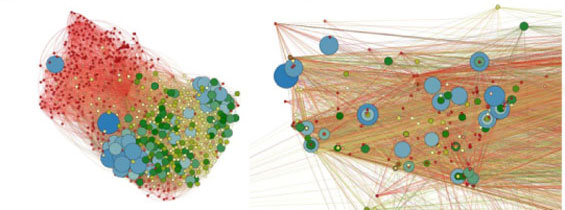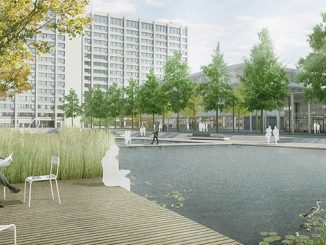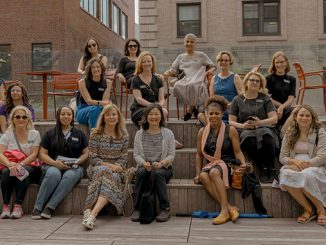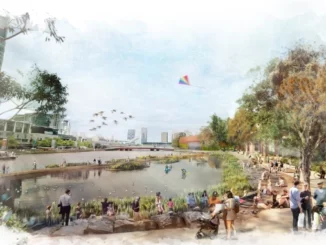
Landscape Architects are connecting through various social networks and platforms to stay informed and learn about the latest landscape topics. Recently, Robert Hewitt, ASLA, is a Professor of Landscape Architecture at Clemson University who has recently co-authored “Finding Multi-Centers: Using crowd-sourcing technologies to define communities of landscape architecture” (1) and World Landscape Architecture has been included in the study that shows landscape architects, architects, planners “share degrees of common topical interests related to competitions, projects, and research topics.”
Hewitt et al study compares data “…mined from twitter feeds of 5 different sources representing the landscape architecture profession and important affiliated professions. The 5 sources included: the APA, the ASLA, World Landscape Architecture, and Architectural Record and Architizer…..”. The study finds “presented methods that combine crowd-sourcing techniques with related web-site, social media and geo-location data and techniques to identify and differentiate social network characteristics and geo-locations of the most active socially networked cities throughout the globe.” The study realises that some cities are more active that others in discussing various issues but most of the discussion is in relation to their own city, which is an interesting use of a global network.
Social Media networks are bigger than many nations across the world and within these social networks there are communities (geo-spatial) similar to the offline world that share a common interest. More and more professionals, academics, organisations, non-profits and interest groups are using the power of social media to connect, share and converse about common topics, problems and solutions.
World Landscape Architecture Social Networks
The study has found that the World Landscape Architecture (WLA) network “….is the most densely interconnected, with many followers intensely interconnected throughout the network, and the most influential followers spread throughout the larger network from its center to periphery.” The WLA network is also strong in the United States, Canada, Mexico with our global network being concentrated in Europe, Australia and East Asia with “… several influential nodes in England, China, Australia and Japan.” Although we are not strong in South America and Africa, we are trying our hardest to increase our network in these regions by featuring work from Africa and South America.
World Landscape Architecture is active in promoting landscape architecture through social media and also providing projects, news, information, competitions to our readers and we see social media as a great tool for spreading the word about landscape architecture to beyond the landscape architecture community. World Landscape Architecture is flattered to be include in the study and thank the authors for providing us with an insight into how landscape architects and allied professionals are using social networks and connecting across the globe.
(1) Finding Multi-Centers: Using crowd-sourcing technologies to define communities of landscape architecture was co-authored by Robert Hewitt, Professor of Landscape Architecture, Clemson University and Principal HewittNassar Studio; Geoff Taylor Solutions Engineer ESRI; Hala Nassar, Associate Professor of Landscape Architecture, Clemson University; Brooks Patrick, University of Stockholm; Copyright CELA
The full report is available via ASLA at Dirt
First spotted at The Dirt – Landscape Architects’ Network Is Global, Dense, and Inter-connected



